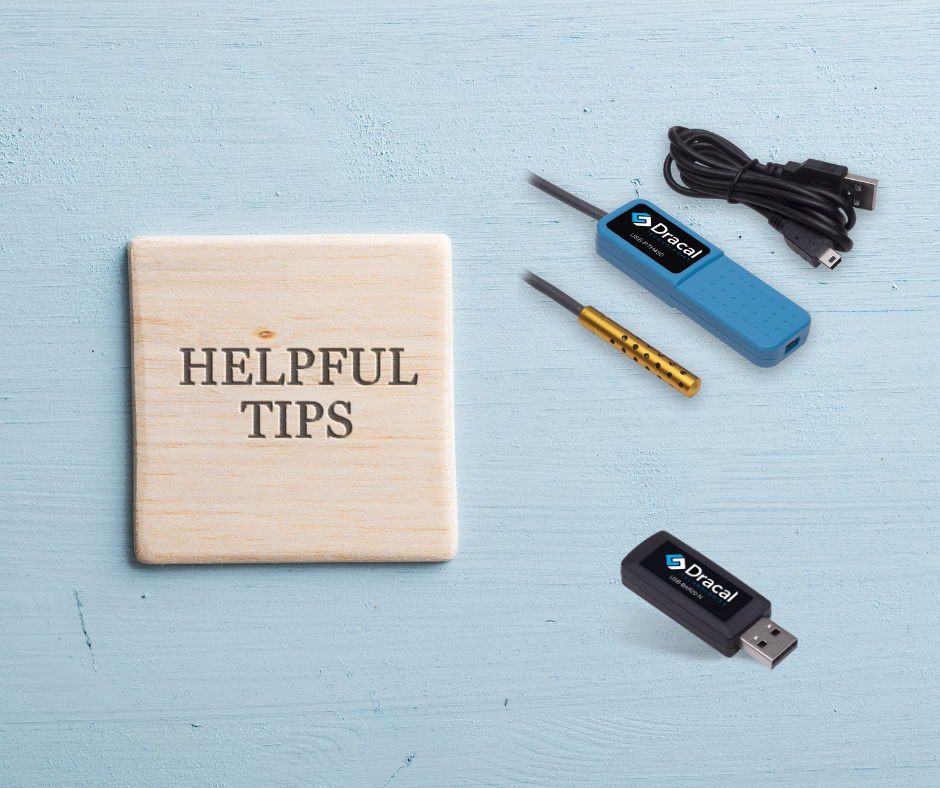How to install a pressure sensor for reliable data

Dracal Technologies offers two types of instruments to measure atmospheric pressure: the BAR20 (BAR20-N), in a compact USB key format, and the PTH series. The latter includes a temperature and relative humidity probe, with the barometer in the blue casing.
Optimal installation of an atmospheric pressure sensor
- To ensure comparable atmospheric pressure measurements, it's important to always install a barometer in the same location and manner.
- It's important to secure it properly.
- Avoid impacts or abrupt manipulations that could damage the barometer and affect measurements.
- As it is a precision instrument, it is important not to let the PTH wires hang freely.
Attention to air currents, temperature, and humidity
- For precise measurements, keeping the barometer away from heat sources and air currents is recommended. A 15 cm cable is sufficient for the BAR20 and BAR20-N.
- Atmospheric pressure changes around a fan, creating a suction and air push effect. All air turbulence should be avoided for precise atmospheric pressure measurements.
- Additionally, although Dracal barometers use a programmed chip for temperature compensation, it is preferable to keep them at room temperature rather than exposing them to a hot air jet, which is uneven in temperature.
- Temperature compensation is effective for ambient temperatures from 20°C to 80°C. At lower temperatures, the atmospheric pressure measurement for the PTH series will drift. The second-order compensation in the BAR20 and BAR20-N minimizes this drift to only about 200 Pa up to -40°C.
- Protecting the barometer from moisture is essential to avoid altering the sensitive electronic components.
Attention to accelerations, vibrations, and strong electromagnetic fields
- The microelectromechanical systems (MEMS) inside the barometer are sensitive to vibrations. It is, therefore, not recommended to subject the barometer to large vibrations to maintain reading accuracy.
- However, you can secure it to a surface not directly exposed to vibrations.
- Electromagnetic fields can disrupt measurements, so keeping the barometer away from potential sources of interference from strong electromagnetic fields is important. These fields, such as those produced by electrical transformers or welding equipment, can cause significant interference, resulting in deviations of several hundred Pascals.
*Our barometers have received CE certification, demonstrating that they function properly when exposed to commonly encountered electromagnetic fields.
Calibration
Although it may be implicit, it is crucial to remember that regular calibration is necessary to maintain measurement accuracy.
Note: measuring differential pressure
Our barometer has an uncertainty of 0.20 kPa over its entire temperature range. Using two barometers, we have a measurement uncertainty of 0.40 kPa or 400 Pa. This measurement uncertainty does not allow for appreciating a small pressure differential. Additionally, since these are two instruments with two different chips, the environment in which the two barometers are located must be considered. As they will be subjected to slightly different temperatures, sometimes to air currents or other factors, it is impossible to ensure that the readings will be comparable.
To measure differential pressure, you will need the differential pressure sensor, which has a measurement uncertainty of 1 Pa. (Coming soon as of March 25, 2024! Contact us to be notified when it's released!)